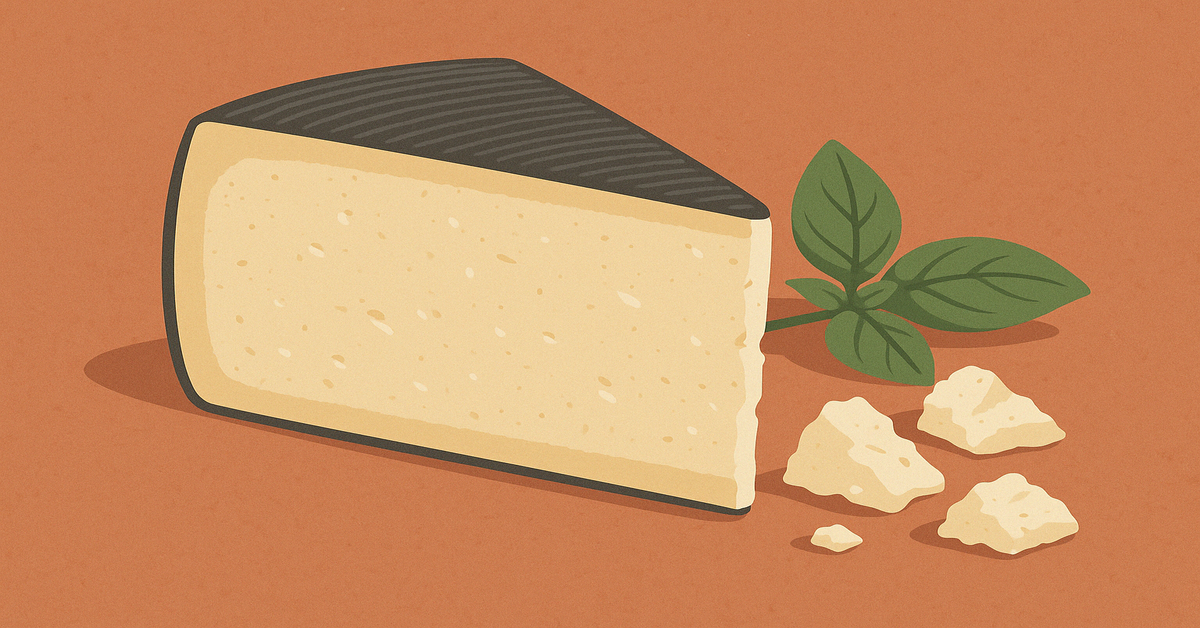In the world of Italian cuisine, few ingredients carry as much weight and legacy as Pecorino Romano. With its firm texture, salty edge, and robust flavor, this cheese has been a staple in Italian kitchens and Roman recipes for over two thousand years. Whether shaved over pasta, grated into soups, or enjoyed with a glass of wine, Pecorino Romano offers a taste that is both ancient and enduring.
Though sometimes overshadowed by the more globally recognized Parmigiano-Reggiano, Pecorino Romano holds its own place of honor—especially in central and southern Italy. It’s one of the country’s oldest cheeses, rooted in tradition yet beloved in modern cuisine. In this article, we’ll explore the origins, production methods, culinary uses, nutritional value, and cultural significance of Pecorino Romano.
The Origins of Pecorino Romano
A Cheese with Ancient Roots
Pecorino Romano is not just a cheese; it’s a cultural artifact. Its history dates back to the Roman Empire, when it was considered essential military rations. Roman soldiers were given daily portions of Pecorino Romano as part of their sustenance due to its:
- Long shelf life
- High protein content
- Strong flavor that improved over time
Historians cite it as being a common food in both legions and urban kitchens, often crumbled into gruels and broths or eaten with bread and wine.
Name and Protected Status
The name “Pecorino Romano’s” breaks down to:
- Pecorino – from “pecora,” the Italian word for sheep
- Romano – referring to its origins near Rome and surrounding Lazio region
Today, Pecorino Romano is a PDO product (Protected Designation of Origin) under EU law. This means it can only be made in specific regions using traditional methods, including:
- Lazio
- Sardinia
- Parts of Grosseto in Tuscany
Production Process
Sheep’s Milk: The Essential Ingredient
Unlike Parmigiano-Reggiano, which is made from cow’s milk, Pecorino Romano’s uses 100% sheep’s milk. This gives it a sharper and more assertive flavor profile. The milk comes from locally bred sheep, often grazing on wild herbs, lending the cheese its unique aromatic qualities.
Steps in Production
- Milk Collection and Heating
Fresh sheep’s milk is collected and heated to approximately 37°C (98.6°F). - Coagulation and Curd Formation
Natural rennet is added, and the curd is formed within 25-30 minutes. It’s then broken down into fine granules. - Draining and Pressing
The curds are drained and placed into cylindrical molds. They’re pressed to eliminate excess whey. - Salting Process
The cheese is dry salted by hand over the course of 80 to 100 days. This traditional method preserves the cheese and intensifies its flavor. - Aging (Maturation)
Pecorino Romano must be aged for a minimum of five months, but the aging process often extends to eight months or more. Longer aging results in a harder, more crumbly texture and a saltier, bolder taste.
Flavor and Texture Profile
Bold, Salty, and Pungent
Pecorino Romano’s is known for its:
- Hard, grainy texture
- Snow-white to pale ivory interior
- Salty, tangy flavor that sharpens with age
The saltiness is deliberate—meant to preserve the cheese and create intensity that holds up in pasta and other savory dishes.
Comparing to Other Pecorino Varieties
There are several types of Pecorino cheese in Italy, including:
- Pecorino Toscano – milder, softer
- Pecorino Sardo – nutty and aromatic
- Pecorino Siciliano – rustic, with earthy overtones
But Pecorino Romano is the boldest and saltiest, ideal for grating.
Culinary Uses
The Holy Grail of Roman Pasta Dishes
Pecorino Romano’s is the star ingredient in several iconic Roman pasta dishes:
- Cacio e Pepe – pasta tossed with Pecorino Romano’s and cracked black pepper
- Carbonara – Pecorino Romano mixed with eggs and pancetta to create a creamy sauce
- Amatriciana – tomato and guanciale-based sauce finished with Pecorino
- Gricia – often called the “white Amatriciana,” using guanciale and Pecorino Romano
These dishes rely on the cheese’s melting quality and flavor intensity.
Salads, Soups, and More
Pecorino Romano’s also shines in:
- Soups: such as minestrone, where grated cheese enhances depth
- Salads: shaved over arugula with lemon and olive oil
- Pizza: especially in Roman-style pies
- Savory tarts and breads: bringing umami to baked dishes
Storage and Preservation
How to Store It Properly
To preserve its quality:
- Wrap tightly in wax or parchment paper
- Store inside a container or plastic bag in the cheese drawer of your fridge
- Avoid freezing, as this can alter its texture
Properly stored, Pecorino Romano can last for several weeks, or even longer when vacuum-sealed.
Nutritional Value
High in Protein and Calcium
Pecorino Romano is a nutrient-dense cheese, providing:
- 8–10 grams of protein per ounce
- Rich calcium content (good for bones and teeth)
- Vitamin A and B12
Low Lactose Content
Because of the aging process, Pecorino Romano’s contains very low levels of lactose, making it tolerable for some lactose-sensitive individuals.
Moderation is Key
The only caution is its sodium level, which is relatively high due to the traditional salting process. While a flavorful ingredient, it’s best enjoyed in moderation, particularly for those on sodium-restricted diets.
Cultural and Economic Impact
A National Treasure of Italy
Pecorino Romano is one of Italy’s most exported cheeses, especially to:
- The United States
- Canada
- Germany
- The UK
It’s considered a flagship product of central Italian culinary heritage.
Role in Festivals and Food Markets
Pecorino often appears in:
- Local festivals in Sardinia and Lazio
- Farmer’s markets and tasting tours
- Cultural exhibits focused on Roman cuisine
Its symbolic role in traditional events reinforces its place in Italian identity.
Common Myths and Misconceptions
Myth: Pecorino Romano is Just Like Parmesan
While both are hard grating cheeses, they differ in:
- Milk source (sheep vs. cow)
- Flavor (sharper vs. nuttier)
- Uses (Pecorino is often the only cheese in Roman recipes)
Myth: It’s Always Made in Rome
Ironically, most Pecorino Romano’s today is produced in Sardinia, even though its name honors Rome. The move was made due to:
- Better climate for aging
- Higher sheep populations
- Space for large-scale production
How to Choose a Good Pecorino Romano
Reading the Label
Look for:
- “DOP” (Denominazione di Origine Protetta) label
- Imprinted name “Pecorino Romano” on the rind
- Production location (Lazio, Sardinia, or Grosseto)
Texture and Smell
A good Pecorino Romano will:
- Feel firm and granular
- Smell slightly earthy or grassy
- Grate easily without turning mushy
Avoid cheeses that appear sweaty, slimy, or overly dry, as these are signs of mishandling.
Buying, Pairing, and Serving Tips
Where to Buy
Pecorino Romano can be found at:
- Italian specialty stores
- Cheese counters in high-end grocery stores
- Online gourmet retailers
It’s often sold in wheels, wedges, or grated form.
Perfect Pairings
Wines:
- Bold reds like Chianti, Barbera, or Montepulciano
- Dry whites such as Verdicchio or Vermentino
Fruits and Nuts:
- Pairs well with figs, pears, and almonds
Meats:
- Delicious with prosciutto, salami, or guanciale
Modern Trends and Adaptations
Vegan Alternatives and Substitutes
In the wake of dietary changes, some brands have created plant-based alternatives to Pecorino Romano using:
- Cashew or almond bases
- Nutritional yeast for umami
- Sea salt and olive oil
While not a direct match, these alternatives aim to mimic the crumble and bite of the original.
Incorporation into Global Cuisine
Beyond Italian dishes, chefs are using Pecorino Romano in:
- Korean-Italian fusion (e.g., cheese-enhanced kimchi fried rice)
- Latin cuisine (sprinkled over elote or tacos)
- American burgers and sandwiches for a salty, rich twist
Conclusion
Pecorino Romano is more than a grating cheese. It is a testament to Italy’s culinary history, agrarian traditions, and bold flavor philosophy. From the battlefields of ancient Rome to Michelin-starred kitchens, its journey reflects a story of adaptation, preservation, and passion.
Whether you’re a cheese aficionado or a curious home cook, adding Pecorino Romano to your pantry means embracing a taste that has stood the test of time—salty, savory, and unforgettable.
FAQs
1. Is Pecorino Romano the same as Parmesan?
No. Pecorino Romano is made from sheep’s milk and is sharper and saltier. Parmesan (Parmigiano-Reggiano) uses cow’s milk and is milder.
2. Can I use Pecorino Romano in place of Parmesan in recipes?
Yes, but be mindful of the salt level and stronger flavor. It works best in Roman pasta dishes or recipes needing a bold cheese.
3. Is Pecorino Romano lactose-free?
It’s very low in lactose due to its aging process, making it tolerable for many with lactose sensitivity.
4. How long does Pecorino Romano last in the fridge?
When wrapped and stored properly, it can last 4 to 6 weeks. A vacuum-sealed wedge can last even longer.
5. Where is Pecorino Romano mostly produced today?
Though it originated in Lazio, most Pecorino Romano is now made in Sardinia, followed by Lazio and parts of Tuscany.
6. What is the best way to serve Pecorino Romano?
Grated over pasta, shaved onto salads, or sliced with fruit and wine—its versatility makes it a perfect finishing touch or star ingredient.











